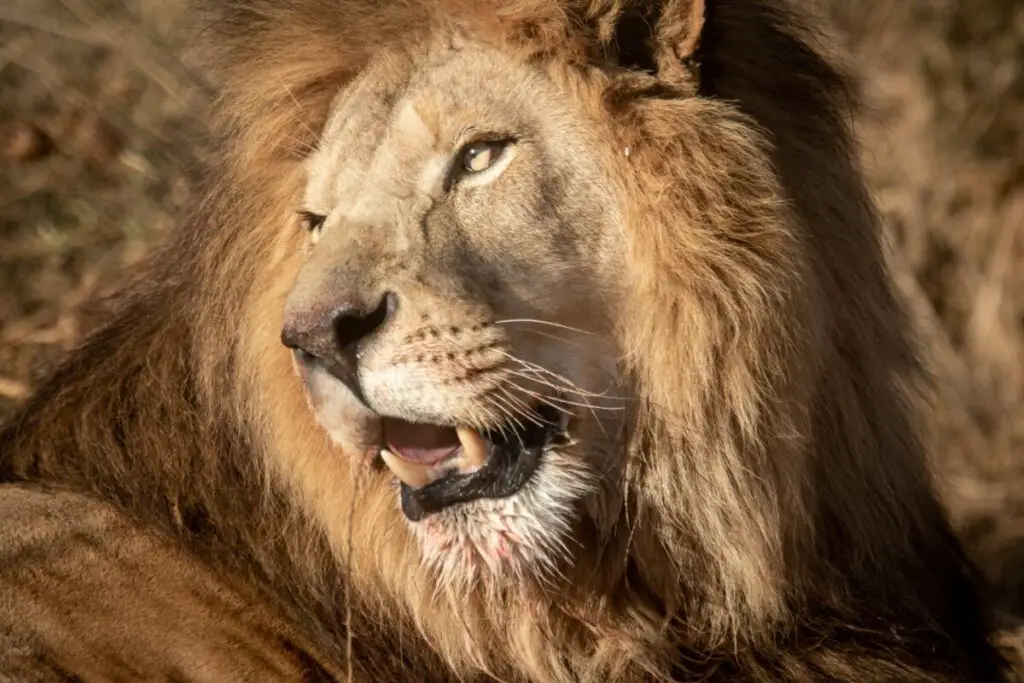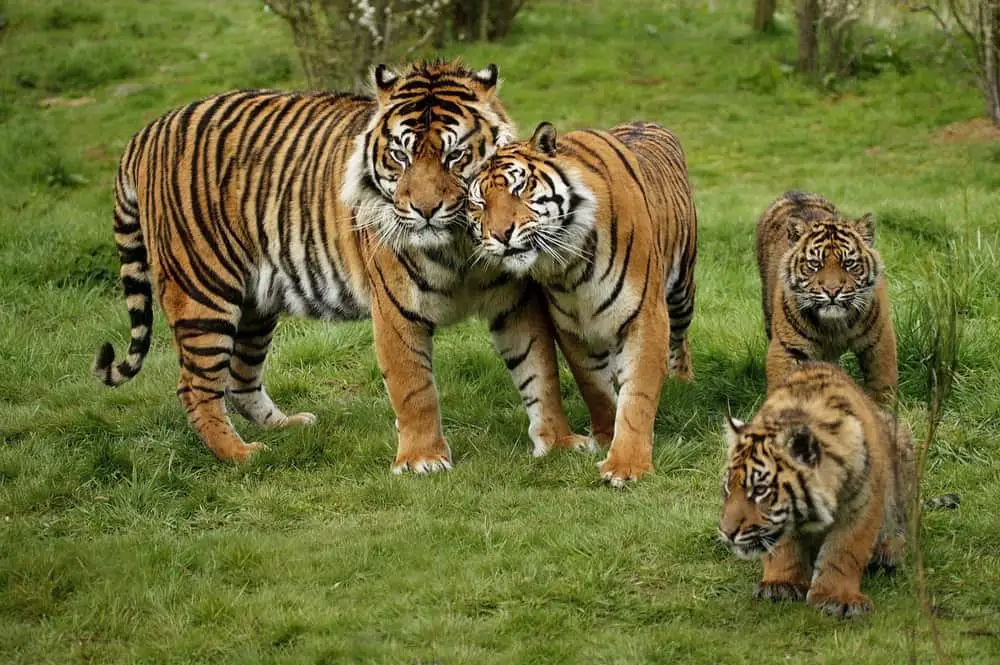Felidae is a family of mammals that includes several species of cats. These animals are known for their strong hunting instincts, agility, and ability to adapt to various environments.
Felids have fascinated humans throughout history due to their beauty and grace. The family Felidae comprises 41 living species and three extinct ones.
The domestic cat (Felis catus) is the most well-known felid, but other members include big cats such as lions, tigers, leopards, jaguars, and cheetahs. Smaller wildcats like lynxes, ocelots, and servals also belong to this group.
Each species has unique characteristics that make them special in their own way. Understanding these differences can help us appreciate the diversity of life on our planet while highlighting conservation efforts needed to protect these magnificent creatures from extinction.

Evolution And Classification Of Felidae
The evolution and classification of Felidae, or the cat family, has been a subject of controversy for many years. This group of animals includes about 41 species which are characterized by their retractable claws and carnivorous diet.
Despite sharing these common traits, there is much debate among scientists regarding the evolutionary relationships between different felid species. Recent studies have shed new light on the phylogeny of Felidae, with genetic data suggesting that some traditional classifications may need to be revised.
For example, it was previously thought that cheetahs were more closely related to small cats than to other big cats such as lions and tigers. However, DNA analysis has shown that this may not be the case. These new discoveries highlight how our understanding of Felidae evolution is constantly evolving as we gain more knowledge through scientific research.
Physical Characteristics Of Felids
Having discussed the evolution and classification of Felidae, it is now important to delve into their physical characteristics. These animals are known for their gracefulness, agility and strength which contribute greatly to their survival in the wild. Felids have a unique body structure that enables them to be effective hunters, with sharp teeth and retractable claws that they use to catch prey.
Behavioral patterns play an important role in felid biology as well. They are solitary animals who prefer to hunt alone except during mating season when males seek out females for reproductive purposes.
The gestation period for female felids varies between species but usually lasts around 100 days or less. Cubs are born helpless and rely on their mothers for nourishment until they can fend for themselves.
Overall, understanding the physical characteristics and behavioral patterns of these fascinating creatures helps us appreciate their adaptability and resilience in nature.
1) Felids silently stalking prey through dense forest undergrowth
2) A mother nursing her cubs while keeping watch for potential threats
3) Two male felids engaged in a fierce battle over territory, their teeth bared and muscles tense as they fight for dominance in a display of strength and perseverance.
Habitat And Distribution Of Felids
The habitat and distribution of felids are as diverse as their species. From the dense forests to open grasslands, these felines have adapted themselves to a range of ecosystems. Felid population is found throughout the world except for Australia and Antarctica.
The behavior of felids in the wild is shaped by their habitat and prey availability. For example, jaguars are known for their exceptional swimming ability which enables them to hunt aquatic animals such as fish and turtles. Similarly, snow leopards live in high-altitude regions where they chase after mountain goats and other prey that thrive in cold weather conditions. The following table highlights some of the major felid species along with their geographic distribution:
| Species | Habitat | Distribution |
|---|---|---|
| African Lion | Grassland/Savanna | Sub-Saharan Africa |
| Bengal Tiger | Forests/Grasslands/Mangroves | India/Bangladesh/Bhutan |
| Cheetah | Open Plains/Acacia Savannas | Eastern & Southern Africa |
| Leopard | Forests/Mountains/Caves/Rocky Outcroppings | Asia/Africa |
Felids’ adaptability has allowed them to survive in various habitats around the globe while maintaining certain behavioral traits unique to each species. Understanding their habitat requirements can help conservationists devise better strategies for protecting these magnificent creatures from endangerment or extinction.
Hunting And Feeding Behaviors
Having explored the habitat and distribution of felids in the previous section, we now delve into their hunting and feeding behaviors. Felids are known for their predatory instincts and highly specialized adaptations that allow them to excel at capturing prey.
Feeding strategies vary among different species of felids depending on a range of factors such as size, agility, strength, and preferred prey type. Some larger species like lions have evolved social hunting behavior where they work together to take down large herbivores such as zebras or wildebeest.
Smaller species like domestic cats use stealth to sneak up on small rodents or birds before pouncing on them with great speed and precision. Additionally, some felids are ambush predators while others pursue their prey over long distances until they tire out.
Prey preferences also differ among species; for instance, leopards prefer smaller mammals while tigers target larger ungulates like deer or wild boar. Overall, these diverse feeding strategies demonstrate the adaptability and resourcefulness of felids when it comes to finding food in their respective habitats.
As we can see from this brief overview of felid feeding habits, there is much variation in how these magnificent creatures hunt and capture prey. Through millions of years of evolution, each species has developed its own unique set of skills that enable it to survive in its environment by securing sustenance efficiently.
Understanding these complex feeding strategies helps us appreciate just how remarkable these animals truly are in nature’s grand scheme of things.
Threats To Felid Populations
The world’s felid populations are under threat from a variety of sources, including human wildlife conflict, poaching, and illegal trade. These threats have led to the decline of many species and could potentially lead to their extinction if they are not addressed soon.
Human wildlife conflict is one of the most significant threats facing felids today. As human populations grow and expand into natural habitats, they often come into contact with these animals, leading to conflicts that can result in injury or death for both humans and cats.
Poaching is another major problem facing felids, especially those whose fur, bones, or other body parts are prized for use in traditional medicine or high-end fashion products.
Finally, illegal trade remains a significant issue for many felid species as demand for exotic pets continues to fuel black market activity around the world.
- Examples of Human Wildlife Conflict:
- Habitat loss due to urbanization
- Increase in livestock grazing areas
- Examples of Poaching and Illegal Trade:
- Tiger bone wine production
- Jaguar teeth jewelry manufacturing
- Elephant ivory trade for ornaments and trinkets
Conservation Efforts For Felids
The threats to felid populations are many, and the conservation efforts necessary to mitigate them require a multifaceted approach.
From habitat loss due to human encroachment and urbanization to poaching and illegal wildlife trade, felids face numerous challenges that threaten their survival.
However, despite these alarming issues, there is hope for conserving these magnificent creatures.
Community involvement has proven effective in mitigating some of the immediate dangers facing felids worldwide.
Local communities can play an essential role by serving as stewards of the environment surrounding them.
Their cooperation with conservation organizations allows for education on best practices around protecting habitats and reducing human-wildlife conflict.
Additionally, technology advancements have allowed for more precise monitoring of wild populations’ movements and behaviors.
With this information at hand, researchers can better understand how to protect not only individual animals but also entire ecosystems that support these vital species.
As we continue advancing our knowledge of conservation science, it becomes clearer than ever that saving our planet’s most endangered inhabitants requires collaboration from all stakeholders involved – from local communities to international policymakers alike.

Conclusion
Felidae is a diverse family of mammals that includes some of the world’s most iconic predators. The evolution and classification of Felidae can be traced back millions of years, with feline ancestors evolving into the modern-day species we see today.
These animals are characterized by their sleek bodies, sharp claws, and powerful jaws, all adaptations that have allowed them to become highly effective hunters. Despite being found in various habitats around the world, felids share several physical characteristics that enable them to thrive in their respective environments.
From the desert-dwelling sand cat to the forest-roaming tiger, each species has unique features suited to its habitat and prey. Hunting and feeding behaviors also vary among different felid species but share common traits such as stealthy movements and ambush tactics.
Sadly, many populations of these magnificent creatures are under threat due to human activities such as habitat destruction, poaching for body parts or fur trade, climate change, and conflict with humans. Conservation efforts aimed at protecting felids involve measures like creating protected areas where they can live safely without interference from humans or other threats.
It’s crucial to understand that these conservation efforts not only benefit wildlife but people too since ecosystems depend on healthy predator-prey relationships for balance. In conclusion, it remains vital now more than ever before that we take action towards conserving our planet’s precious resources like Felidae.
By ensuring that these majestic creatures continue to exist for generations to come through sustainable management practices, we will preserve essential ecosystem services while benefiting ourselves as well. As a freelance writer dedicated to sharing knowledge about these amazing creatures’ plight worldwide, I hope this information inspires readers everywhere who value biodiversity preservation and recognize how critical it is in maintaining a sustainable future for all life forms on Earth.

